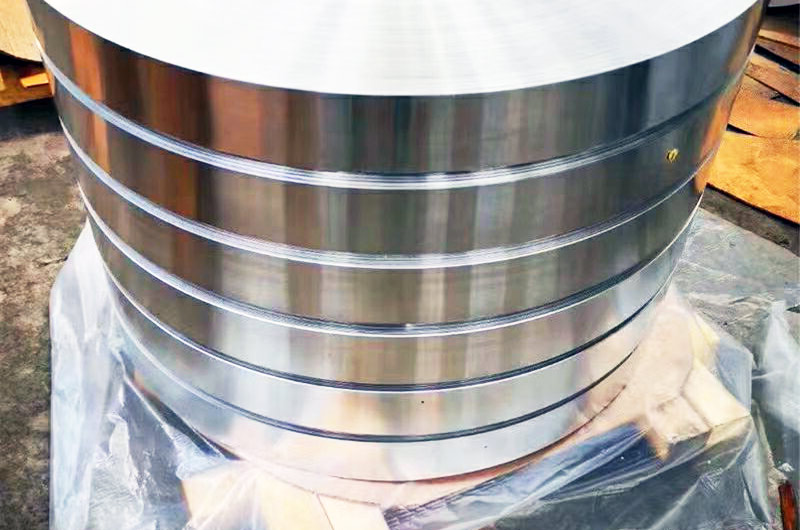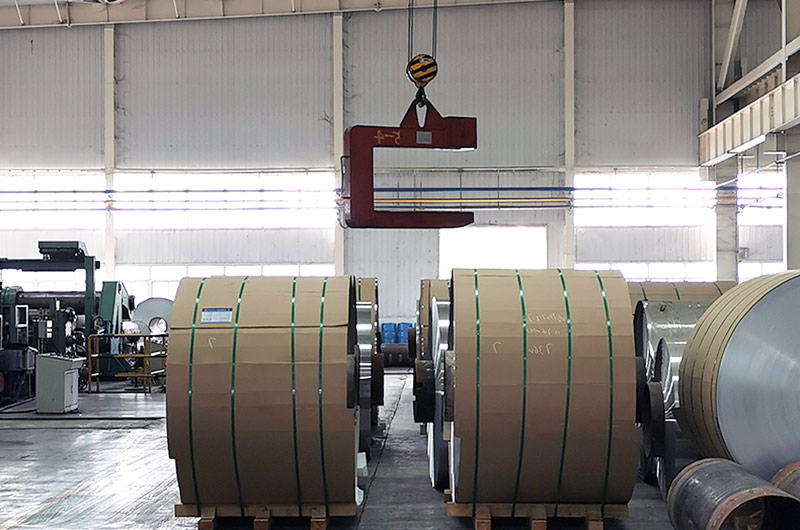- 6063 Aluminum Strip Introduction
- What is 6063 Aluminum Strip?
- Properties of 6063 Aluminum Strip
- Chemical Composition of 6063 Aluminum Strip
- Mechanical Properties of 6063 Aluminum Strip
- Physical Properties of 6063 Aluminum Strip
- Challenges with 6063 Aluminum Strip
- Problem-Solving Strategies for Customers
- Common Searches About 6063 Aluminum Strip
- Conclusion
6063 Aluminum Strip Introduction
6063 aluminum strip, a member of the 6xxx series, is a versatile and widely used alloy in various industries. This comprehensive guide is dedicated to providing an in-depth understanding of 6063 aluminum strip, with a specific focus on addressing challenges encountered by customers.
From its properties to applications, common issues, and problem-solving strategies, this guide aims to empower manufacturers, engineers, and end-users with the knowledge needed to optimize the use of 6063 aluminum strip.

What is 6063 Aluminum Strip?
6063 aluminum strip is a heat-treatable alloy known for its excellent extrudability, formability, and corrosion resistance.
Composed primarily of aluminum, magnesium, and silicon, this alloy is particularly favored for its versatility and aesthetic appeal.
Properties of 6063 Aluminum Strip
1. Extrudability
Advantage: 6063 aluminum strip excels in extrudability, making it a preferred choice for intricate shapes and profiles.
Application: Widely used in the construction industry for the fabrication of architectural profiles and framing systems.
2. Formability
Advantage: The alloy offers good formability, allowing it to be easily shaped and bent without compromising its mechanical properties.
Application: Used in various applications where complex designs and contours are essential.
3. Corrosion Resistance
Advantage: 6063 aluminum strip exhibits excellent corrosion resistance, ensuring durability in outdoor and corrosive environments.
Application: Commonly employed in architectural and automotive components subjected to weather exposure.
4. Heat Treatability
Advantage: The alloy is heat-treatable, providing opportunities for strengthening and tailoring its properties to specific applications.
Application: Heat-treated 6063 aluminum strip is utilized in structural components requiring increased strength.
5. Aesthetic Appeal
Advantage: Known for its smooth surface finish and aesthetic appeal, 6063 aluminum strip is often chosen for visible applications.
Application: Used in the production of decorative trims, furniture, and other consumer goods.
Chemical Composition of 6063 Aluminum Strip
6063 aluminum strip has a specific chemical composition that contributes to its unique set of properties:
- Aluminum (Al): 97.0% minimum
- Silicon (Si): 0.20% - 0.60%
- Iron (Fe): 0.35% maximum
- Copper (Cu): 0.10% maximum
- Manganese (Mn): 0.10% maximum
- Magnesium (Mg): 0.45% - 0.90%
- Chromium (Cr): 0.10% maximum
- Zinc (Zn): 0.10% maximum
- Titanium (Ti): 0.10% maximum
Other Elements: Each 0.05% maximum, total of other elements 0.15% maximum
The combination of these elements imparts 6063 aluminum strip with its distinctive properties, making it suitable for various applications.
Mechanical Properties of 6063 Aluminum Strip
The mechanical properties of 6063 aluminum strip are crucial in determining its performance in different applications:
- Tensile Strength: 130 MPa (18, 900 psi) - The maximum stress a material can endure under tension.
- Yield Strength: 110 MPa (16, 000 psi) - The stress at which a material begins to deform plastically.
- Elongation at Break: 12% - The percentage increase in the length of the material before rupture.
- Hardness (Brinell): 73 HB - A measure of the material's resistance to indentation.
The moderate tensile and yield strengths, combined with good elongation, make 6063 aluminum strip suitable for applications requiring a balance of strength and formability.
Physical Properties of 6063 Aluminum Strip
Understanding the physical properties of 6063 aluminum strip is essential for its proper application:
- Density: 2.70 g/cm³ - The mass per unit volume, indicating the material's compactness.
- Melting Point: 655°C (1, 211°F) - The temperature at which the solid material transforms into a liquid.
- Thermal Conductivity: 201 W/m·K - A measure of the material's ability to conduct heat.
- Electrical Conductivity: 58.0 MS/m - The ability to conduct electric current.
The relatively low density, coupled with good thermal and electrical conductivity, enhances the appeal of 6063 aluminum strip in diverse industries.

Challenges with 6063 Aluminum Strip
1. Surface Imperfections
Scratching and Denting
Challenge: 6063 aluminum strip, like many aluminum alloys, can be sensitive to surface damage during handling and processing.
Impact: Aesthetic concerns and potential structural issues if not addressed promptly.
Oxide Formation
Challenge: Oxide formation on the surface can occur during manufacturing and storage.
Impact: Diminished aesthetics and potential corrosion issues if not properly managed.
2. Welding and Joining Issues
Weld Cracking
Challenge: 6063 aluminum strip may be susceptible to weld cracking during certain welding processes.
Impact: Compromised structural integrity and performance in welded components.
Porosity
Challenge: Porosity in welds can occur, affecting the mechanical properties of the joint.
Impact: Reduced strength and potential susceptibility to corrosion at the weld site.
3. Forming and Bending Difficulties
Cracking during Forming
Challenge: Inadequate forming parameters may lead to cracking during shaping processes.
Impact: Rejected components, increased production costs, and delays.
Springback
Challenge: 6063 aluminum strip may exhibit springback after forming, affecting dimensional accuracy.
Impact: Challenges in achieving precise shapes and dimensions in formed components.
Problem-Solving Strategies for Customers
1. Surface Protection and Handling
Protective Coatings
Strategy: Apply protective coatings or films to the surface of 6063 aluminum strip during transportation and storage.
Benefits: Minimize scratching and denting, preserving the aesthetics and integrity of the material.
Careful Handling Procedures
Strategy: Implement meticulous handling procedures, including the use of proper equipment and avoiding rough surfaces.
Benefits: Reduce the likelihood of surface imperfections caused by mishandling.
2. Welding Best Practices
Proper Surface Preparation
Strategy: Ensure thorough cleaning and surface preparation before welding to minimize the risk of weld cracking.
Benefits: Enhance the quality and integrity of welded joints.
Optimized Welding Parameters
Strategy: Fine-tune welding parameters, including heat input and travel speed, to mitigate issues like porosity.
Benefits: Improve the overall quality of welds and minimize defects.
3. Optimizing Forming Processes
Precise Forming Parameters
Strategy: Control forming parameters such as temperature and speed to prevent cracking during shaping.
Benefits: Improve the formability of 6063 aluminum strip and reduce the occurrence of defects.
Post-Forming Heat Treatment
Strategy: Consider post-forming heat treatment to alleviate springback and enhance dimensional stability.
Benefits: Achieve more accurate shapes and dimensions in formed components.
Common Searches About 6063 Aluminum Strip
People often search for additional information to gain a more comprehensive understanding of 6063 aluminum strip. Common queries include:
Surface Treatment of 6063 Aluminum Strip
Query: "Best surface treatment for 6063 aluminum strip"
Answer: Various surface treatments, such as anodizing or powder coating, can enhance the appearance and corrosion resistance of 6063 aluminum strip. The choice depends on the specific application and desired outcome.
Welding Techniques for 6063 Aluminum Strip
Query: "Recommended welding techniques for 6063 aluminum strip"
Answer: TIG (Tungsten Inert Gas) welding is often recommended for 6063 aluminum strip due to its ability to provide precise control over the welding process and minimize heat input, reducing the risk of distortion and weld defects.
Applications of 6063 Aluminum Strip
Query: "Common applications of 6063 aluminum strip"
Answer: 6063 aluminum strip finds use in architectural trims, window and door frames, heat sinks, and various structural components due to its extrudability, formability, and corrosion resistance.
Comparison with Other Aluminum Alloys
Query: "6063 vs. 6061 aluminum strip - differences"
Answer: While both alloys share similarities, 6063 aluminum strip generally offers better extrudability and is often chosen for applications where intricate shapes are required. 6061, on the other hand, is known for higher strength.
Conclusion
In conclusion, 6063 aluminum strip, with its impressive properties, plays a crucial role in various industries.
Understanding and addressing challenges associated with surface imperfections, welding, and forming are key to maximizing the benefits of this versatile alloy.
By implementing effective problem-solving strategies and staying informed about industry trends, customers can optimize their use of 6063 aluminum strip, ensuring success in their manufacturing processes and applications.
As ongoing research and innovations continue, the future holds promising developments that will further enhance the performance and usability of 6063 aluminum strip in diverse industries.
